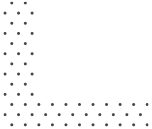
Keeping chicks warm is the most important part of raising chickens. Are you looking for the safest, most reliable way to heat your chicks? Look no further than a Chick Plate.
Chick Plates provide a more natural heat source for baby chicks. These modern brooder heaters are also safer and more economical than a traditional heat lamp. In the debate of brooder plates versus heat lamps, a heat plate will almost always win out.
Features of the Chick Heat Plate (13 watt brooder plate)
Uses radiant heat technology
More similar to a mother hen
Only heats solid objects, not the air
Ideal for warm climates
Warms up to 20 chicks
Adjustable height (5-15 cm) for growing chicks
Suitable for all types of poultry, from quail to geese
Saves electricity
Has a temperature fuse and a resistance fuse for safety
The top of the plate doesn’t get hot
Measures 25 x 25 cm
Factory fitted with an Australian electrical plug
Developed in Holland
Brooder plates vs heat lamps
For modern chicken keepers, a brooder plate such as a Chick Plate is a much better option than a heat lamp. Heat lamps are renowned for causing fires in homes and chicken coops. They are also problematic because the constant light and inescapable heat interfere with the chicks’ natural processes.
Brooder plates provide a more natural heat source that the chicks can move away from if they become too hot. They do not provide artificial light, so chicks can sleep normally. Brooder plates such as Chick Plates are also safer, with a lower risk of fire.
How to use a Chick Plate to heat a brooder
Chick plates should only be used where the ambient temperature is 10 degrees Celsius or above.
Set up your chick brooder as normal, with the Chick Plate in one corner and food and water in another. Turn the Chick Plate on and place your chicks underneath.
Monitor your chicks. If they are huddled together and peeping, they may be too cold. Check the ambient temperature and lower the plate. If they are far away from the plate or panting, it may be too hot. Consider a larger brooder or a cooler spot.
As the chicks grow, adjust the height of the plate so that they can fit underneath it.
Most manufacturers recommend covering the top of the Chick Plate with contact paper or similar to prevent it becoming covered in chicken poo and to extend its working life.
Phone:
0432143005
Email:
murray@finlaysondigital.com
Location:
16 Camuglia street,
Garbutt
Queensland
4814


